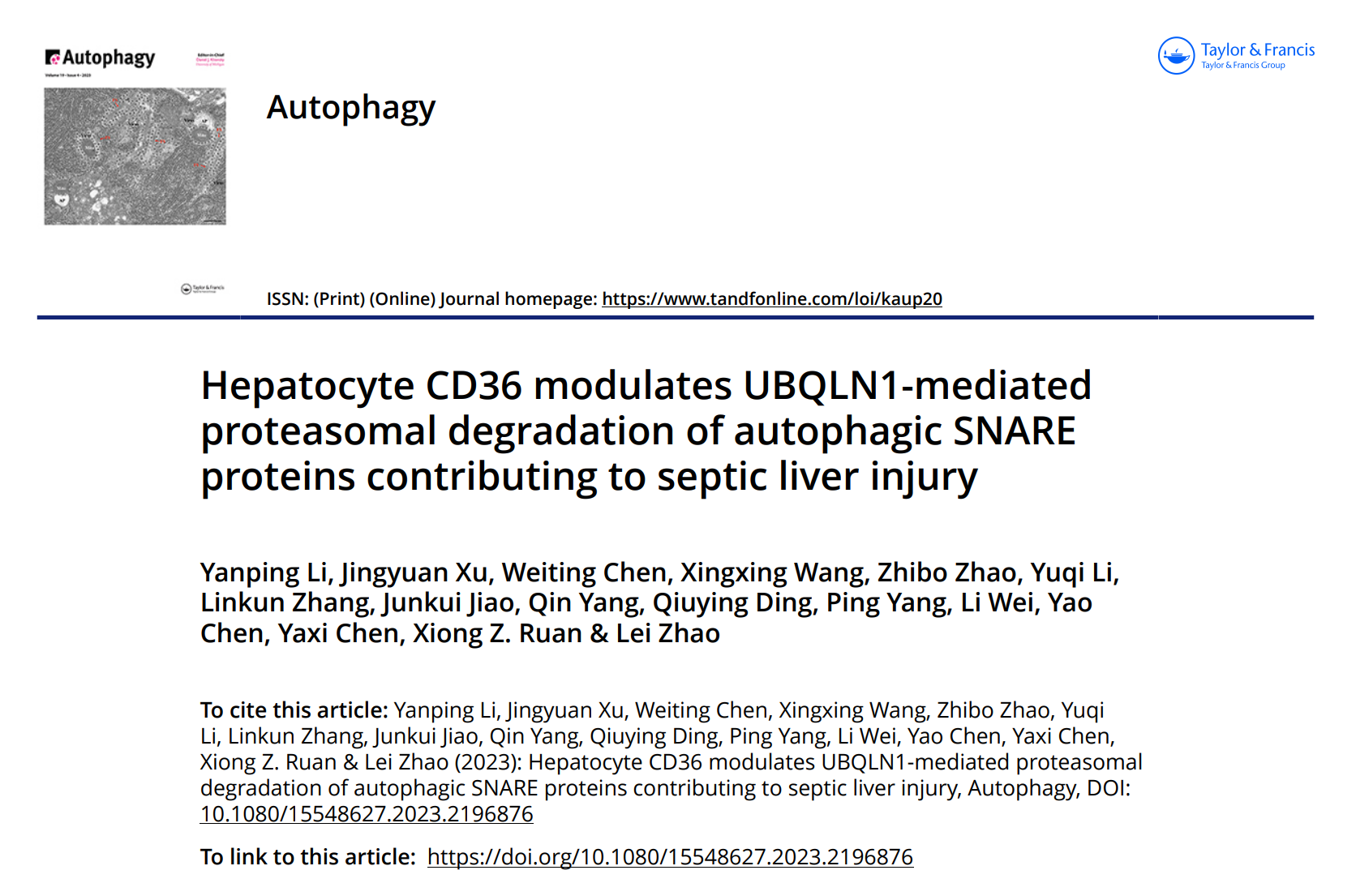On April 23rd, 2023, RUAN Xiongzhong / ZHAO Lei's research group from the Key Laboratory of Molecular Biology of Infectious Diseases of the Ministry of Education & Chongqing Key Laboratory of Lipid and Glucose Metabolism Diseases of CQMU published an article entitled " Hepatocyte CD36 modulates UBQLN1-mediated proteasomal degradation of autophagic SNARE proteins contributing to septic liver injury " online in Autophagy, which clarified that during sepsis infection, LPS can up-regulate the expression of hepatic fatty acid translocase CD36, thereby recruiting ubiquitin-like protein UBQLN1, and mediating the ubiquitin-proteasome degradation of autophagy-related SNARE proteins, and then leading to autophagosome-lysosome fusion disorder and sepsis liver injury. For the first time, it reported the new function of CD36 in regulating the degradation of SNARE protein ubiquitin proteasome, suggesting that targeting CD36 in hepatocytes may be a new strategy to prevent and treat sepsis liver injury.

Sepsis is a serious disease characterized by excessive systemic inflammation and life-threatening organ dysfunction. It is one of the most common causes of death in hospitals, accounting for about one-fifth of all deaths worldwide each year. Liver injury often occurs in the early stage of sepsis and is closely related to the poor prognosis of patients with sepsis. However, the molecular mechanism of liver injury in sepsis has not yet been fully elucidated, and no effective targeted therapy strategy has been established.

This research revealed the importance of the CD36-UBQLN1-SNARE axis in the regulation of autophagosome-lysosome fusion and liver injury in sepsis for the first time. Inhibiting the expression of CD36 in hepatocytes or targeting its palmitoylation in hepatocytes may provide new targets and new ideas for the treatment of sepsis-induced liver injury.
Original link:https://pubmed.ncbi.nlm.nih.gov/37014234/